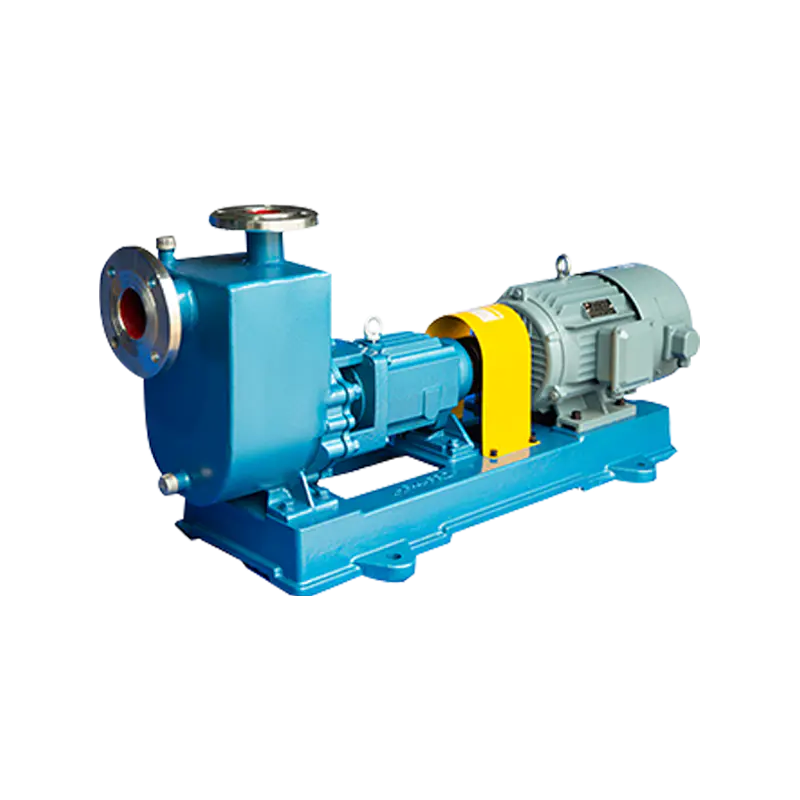Redundant Centrifugal Pump System Design
Standby Pump: In system design, adding a redundant pump (standby pump) ensures that if the main pump fails, the standby pump can immediately take over and prevent system downtime. The size of the standby pump can be designed to be the same or slightly smaller than the main pump, depending on the load and demand.
Automatic Switching: Design an automatic switching device to ensure that the standby pump can be activated quickly when the main pump fails. A control system (e.g., PLC) can be used to monitor the main pump's operating status and automatically activate the standby pump in case of failure.
Pump Cluster Control: When multiple pumps are working in parallel, a pump cluster control system can be designed. If one or more pumps fail, the system will automatically adjust the operating parameters of the remaining pumps to maintain the overall system's flow and head.
Centrifugal Pump Dual-Pump Parallel Design
Pump Parallelism: In parallel design, two or more pumps share the flow, acting as backups for each other. When one pump fails, the remaining pumps can continue running to maintain the required flow for the system. This design is suitable for high and continuous flow applications.
Load Distribution: When pumps are connected in parallel, it is important to ensure that the load is evenly distributed to prevent any single pump from being overloaded. The pump selection and speed control devices (e.g., variable frequency drive, VFD) can help optimize load distribution.

Automatic Monitoring and Fault Warning System
Real-Time Monitoring: Install sensors (such as vibration sensors, temperature sensors, pressure sensors, and current sensors) to monitor the pump's operational status in real time. These sensors can detect anomalies like overloads, overheating, or excessive vibrations and issue early warnings, allowing for proactive maintenance.
Automatic Alarm System: When a centrifugal water pump fails, the alarm system will promptly notify the operators. Modern pump systems can be integrated with SCADA (Supervisory Control and Data Acquisition) systems for remote monitoring and alerting maintenance personnel.
Load Balancing and Automatic Adjustment for Multi-Pump Centrifugal Systems
Variable Frequency Drive (VFD): By installing variable frequency drives, the pump speed can be adjusted to automatically match the real-time flow requirements. This allows the system to adjust the pump's operating speed according to load variations, preventing individual pumps from becoming overloaded and increasing system fault tolerance.
VFD Control and Parallel Operation: Multiple pumps can be controlled through a VFD to achieve automatic load balancing. Even if one pump fails, the VFD can adjust the remaining pumps' speeds to ensure that flow and head remain unaffected.
Dynamic Load Balancing Design for Centrifugal Pumps
Pump Cluster Control System: A pump cluster control system can adjust each pump's load in real time when multiple pumps operate in parallel, preventing individual pumps from being overloaded. This system can adjust the pumps' start/stop status based on real-time data, maximizing fault tolerance.
Real-Time Pump Load Monitoring: Through load monitoring systems, the operating pump numbers and load distribution can be automatically adjusted. If a failure occurs, the remaining pumps can take on additional load to keep the system running smoothly.
Durability and Fault Recovery Design for Centrifugal Pumps
Redundant Seals and Bearing Systems: Design redundant seal and bearing systems to reduce downtime caused by seal or bearing failures. For example, a double seal system or the use of more wear-resistant materials can enhance the system's fault tolerance.
Cavitation Prevention: Choose the appropriate pump type and configuration to avoid cavitation, which increases the system's tolerance to cavitation. This not only prevents early damage to the pump but also improves its fault tolerance under unstable conditions.
Structural Design of Centrifugal Pumps
Modular Design: The modular design of the pump system provides greater flexibility and fault tolerance. For instance, modular designs for the pump casing and motor allow for easy replacement of damaged parts, reducing downtime and enabling rapid system recovery.
Cold and Hot Backup Design: For critical equipment, cold and hot backup designs can be adopted. In a cold backup, the backup equipment starts in standby mode; in a hot backup, the backup equipment operates in parallel with the main pump, running at partial load until a seamless switch is needed.
Regular Maintenance and Preventive Care
Regular Inspections and Maintenance: Design a regular inspection and maintenance plan to avoid system downtime caused by aging, wear, or sudden failures. Periodic replacement of consumable parts such as seals, bearings, and impellers, along with timely identification of potential issues, helps prevent small faults from escalating into major failures.
Preventive Replacement of Components: Based on the pump's operating environment and load conditions, set appropriate preventive replacement cycles. For example, regular cleaning of the pump body, oil change, and impeller inspection can prevent the accumulation of faults.
Fault-Tolerant Design for Centrifugal Pump Control Systems
Redundant PLC Control Systems: In the control system, use redundant PLCs (Programmable Logic Controllers) or Distributed Control Systems (DCS). This ensures that when one control unit fails, the backup unit can immediately take over.
Multi-Channel Control: For critical pump systems, design multiple control channels. For example, use dual sensors to monitor the same parameter (e.g., pressure or flow) to ensure data accuracy and system reliability.
Optimization Design of Centrifugal Water Pumps and Piping Systems
Mitigating Pressure Fluctuations: Design soft start devices to prevent hydraulic shock (water hammer) caused by sudden pump starts, reducing system damage and improving fault tolerance.
Redundant Piping Systems: In the piping system, design backup pipelines or valves so that if the main pump fails, liquid can continue to flow through the backup pipeline, avoiding system shutdown caused by pipeline failure.





















